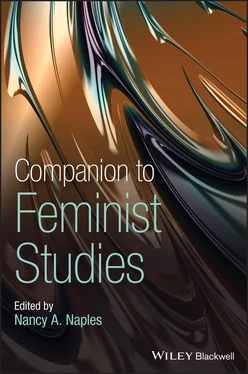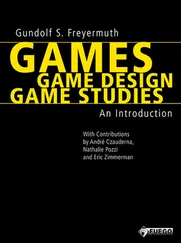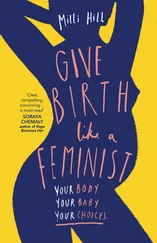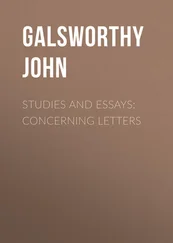1 ...6 7 8 10 11 12 ...40 In their overview of feminist approaches to ethnography in anthropology, Dána‐Ain Davis and Christa Craven ( Chapter 16) emphasize the diversity of feminist ethnographic innovations. Despite these differences, Davis and Craven find that there are overlapping “commitment[s] to paying attention to marginality and power differentials, attending to a feminist intellectual history, seeking justice, and producing scholarship in various creative forms that can contribute to movement building and/or be in the service of the people, communities, organizations, and issues we study.”
Ariella Rotramel examines “Feminist Historiography” in Chapter 17. Rotramel explains that this methodological approach can best be understood as a form of feminist praxis, namely, one that is shaped by the dialectical relationship between theory and practice. For example, knowledge generated by social activism is then used to inform the development or reformulation of social theory, which, in turn, informs future activist strategies and engagement. Feminist historians who adopt this approach have been at the forefront of revealing the relations of power embedded in the archives that are used to generate knowledge about the past. Rotramel also notes that feminist historians have expanded their approach by drawing on literary studies and digital humanities to alter how scholars approach analysis of historical texts.
Feminist scholars debate both the subjects for analysis and the methods utilized within the social sciences, the arts, and the humanities. Culture and media are topics that are approached in a variety of ways in different disciplines. In Chapter 18, the final chapter in Part III, Diane Grossman explains how feminist scholars effectively shifted cultural analysis to center gender and alter how scholars approach cultural texts and study cultural artifacts in the area of popular culture. Grossman demonstrates how disciplinary as well as epistemological framing influence research questions as well as methodological approaches.
The last part of the volume is constructed around the theme of “Feminist Praxis.” Many of the authors in this volume writing about both feminist epistemologies and methodologies acknowledge how activism and the goals of social justice have contributed to the innovations and reformulations of feminist approaches since the 1970s. This last part focuses on topics that explicitly engage with social change and social justice. In this regard, it is fitting to start with the chapter on “Feminist Pedagogies,” as it is a form of feminist praxis designed to train students in critical reading, writing, and community‐building skills to enhance their ability to contribute to social change efforts in their everyday lives. While those who teach courses in Feminist Studies may or may not view their teaching through the lens of feminist pedagogy, many do see their role in the classroom as an extension of their commitment to educating for social justice. In Chapter 19, “Feminist Pedagogy,” Danielle M. Currier reviews the history of this form of feminist praxis and focuses on the importance of intersectionality, reflexivity, experiential learning, and critical skill building.
In Chapter 20, Manisha Desai and Koyel Khan examine feminist praxis in the context of globalization. In particular, they interrogate decolonial postcolonial feminism as it developed through a recognition of the ways in which colonialism, modernity, and capitalism contoured constructions of gender. It “is informed by social imaginaries of gender justice beyond the modern” liberal or socialist framing. Desai and Khan conclude that “decolonial feminist praxis in a globalizing world needs to rethink women's empowerment and gender justice beyond the modernist emancipatory logic and locate it within anti‐racist, anti‐capitalist, and anti‐settler colonial struggles that seek alternative relations among humans, with other species, and with nature.”
In Chapter 21, Gill Wright Miller focuses on “somatic praxis” and argues for the importance of “the material body” for feminist praxis. Experiences of “menstruation, pregnancy, childbirth, lactation, menopause … lay the groundwork for a body‐centered approach to corporeality.” Miller provides a methodological framework for assessing pedagogies of the body. Miller explains that in order to integrate feminism and somatic praxis requires asking “ourselves questions about our own preferences and expectations, to notice and take responsibility for the delivery of our expression, and to aim to shape multidimensionally with the other participants.”
Meredeth Turshen and Marci Berger explore the praxis of “Feminist Health Movements” in Chapter 22. They start with defining key terms in understanding feminist social activism and political claims, and how feminists challenge practices of forced sterilization and eugenics. Both authors illustrate the contemporary challenges posed by different aspects of “hashtag activism.” For example, #BringBackOurGirls was developed to publicize the kidnapping of schoolgirls from the Nigerian Chibok Government Secondary School by Boko Haram terrorists and #SayHerName draws attention to the experiences of Black women who were targets of police violence.
In Chapter 23on “Feminist Praxis and Gender Violence,” Margaret Campe and Claire Renzetti provide an overview of different theories that explain interpersonal and structural violence, including liberal and radical feminisms. They also discuss the significance of intersectional analysis for revealing the complex inequalities and differential risk faced by different women. They close with an analysis of feminist political economic explanations that explicate the mutually reinforcing dynamics of interpersonal and structural dimensions of gender‐based violence.
In Chapter 24, Astrid Ulloa discusses the history and contributions of feminists to the interdisciplinary field of Political Ecology. She describes different strands, one originating within an Anglo‐Saxon context and the other in Latin America. While there are common themes across these two approaches, they each have different histories, socio‐political contexts and physical environments. Ulloa describes “the diverse contributions from feminisms, gender studies and gender and development discussions, and the approaches of ecofeminism.” She then focuses specifically on Latin American Feminist Political Ecology to emphasize the significance of “diverse feminisms, feminist spatialities, feminist movements, and indigenous women's movements.” She draws on her own experience and scholarship and concludes by considering contemporary debates and trends in the field.
In Chapter 25, the final chapter, Molli Spalter considers the importance of sustainability and solidarity in “Feminism and Social Justice Movements.” She opens with an overview of the history of feminist movements and surveys the key trends in the scholarship on feminist social movements, including an understanding of intersectional identities and the importance of global perspectives. Spalter notes the growing influence of feminist praxis in social justice movements, broadly defined, and illustrates with a discussion of Palestinian Working Woman Society for Development and Black Lives Matter.
It is an exciting and challenging time for the field of Feminist Studies. While Feminist Studies and feminism, more generally, have been the target of backlash and ridicule by right‐wing critics (Leach 2020; Kano 2011; Oakley and Mitchell 1997; Silva and Mendes 2015), feminism has also broadened its influence from women's movement activism and scholarship to broader social justice movements and has entered mainstream celebrity culture and everyday discourse (Kemp 2017). Feminist Studies faculty are training a new generation of scholars and activists who are committed to intersectional and transnational praxis. Feminist pedagogues in all academic settings are transforming educational contexts for students around the world. This edited collection provides historical perspectives, cutting edge scholarship, and contemporary debates in the field for those engaged in this important educational and activist role. Our hope is that this volume becomes a resource for students, faculty, and activists who are dedicated to social justice and critical engagements which challenge inequalities and oppression in everyday life and help build toward a just and peaceful future. It is also important to acknowledge the gaps in what we are able to cover in this volume and encourage greater dialogue and more sustained attention to the work produced in sites farther removed from the hegemonic Western and Northern social and geographic context that, despite our efforts in the chapters to follow, is still underrepresented.
Читать дальше












